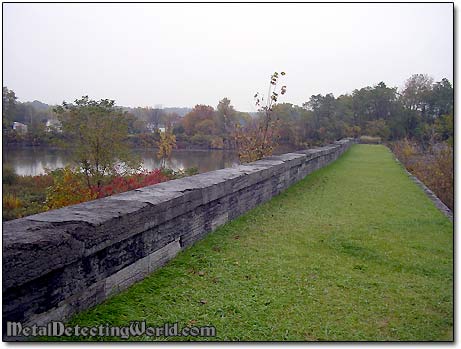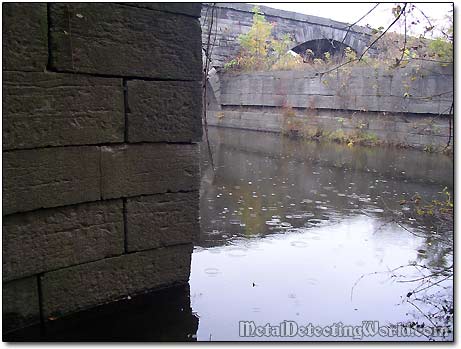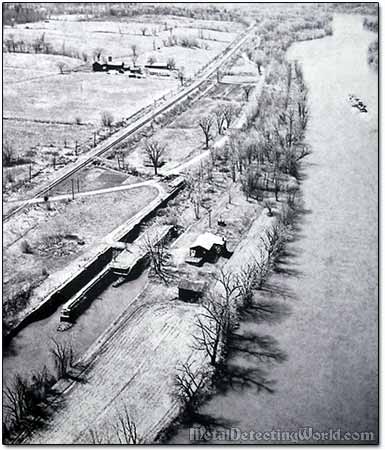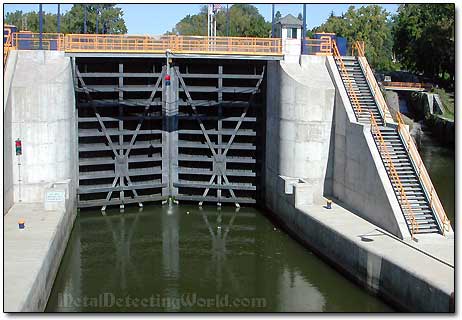Treasure Hunting with Rodney (Story 7) - Erie Canal, Schoharie Aqueduct
Schoharie Aqueduct Top Ramp

Massive Stone Work of Aqueduct

By the close of the I9th century, canal engineers had determined that further enlargement of the Erie Canal was impossible. Technology had advanced to a point where the Mohawk River itself could be modified for traffic. Both the original and Enlarged Erie Canals had avoided the Mohawk, but new dam-building, steel-making, and dredging techniques were now available to tame the previously uncontrollable river.
On a picture below is a view of the Mohawk Valley looking west. The Barge Canal/Mohawk River is on the right. On the lower left Is the abandoned Enlarged Erie Canal and Yankee Hill Lock, lock No. 28.
Courtesy of Clarke Blair, Fonda. New York.

After the opening of the Barge Canal in the early 20th century, the old Erie Canal and its structures were abandoned. Much of the land was subsequently auctioned off into private ownership.
The "Erie Division" of the New York State Barge Canal System is still in operation and is comprised of 35 locks, each 300-feet long by 45-feet wide. Its boat channel ranges from 160- to 200-feet wide and is 14-feet deep. Today the Erie Canal and its lock system is used primarily for recreational use among locals and tourists. The 25-mile boat excursions have recently become very popular, especially in the fall when one can observe the bright colorful foliage passing by on both sides for just $15.
Erie Canal Lock 2 in Waterford, New York, Today
